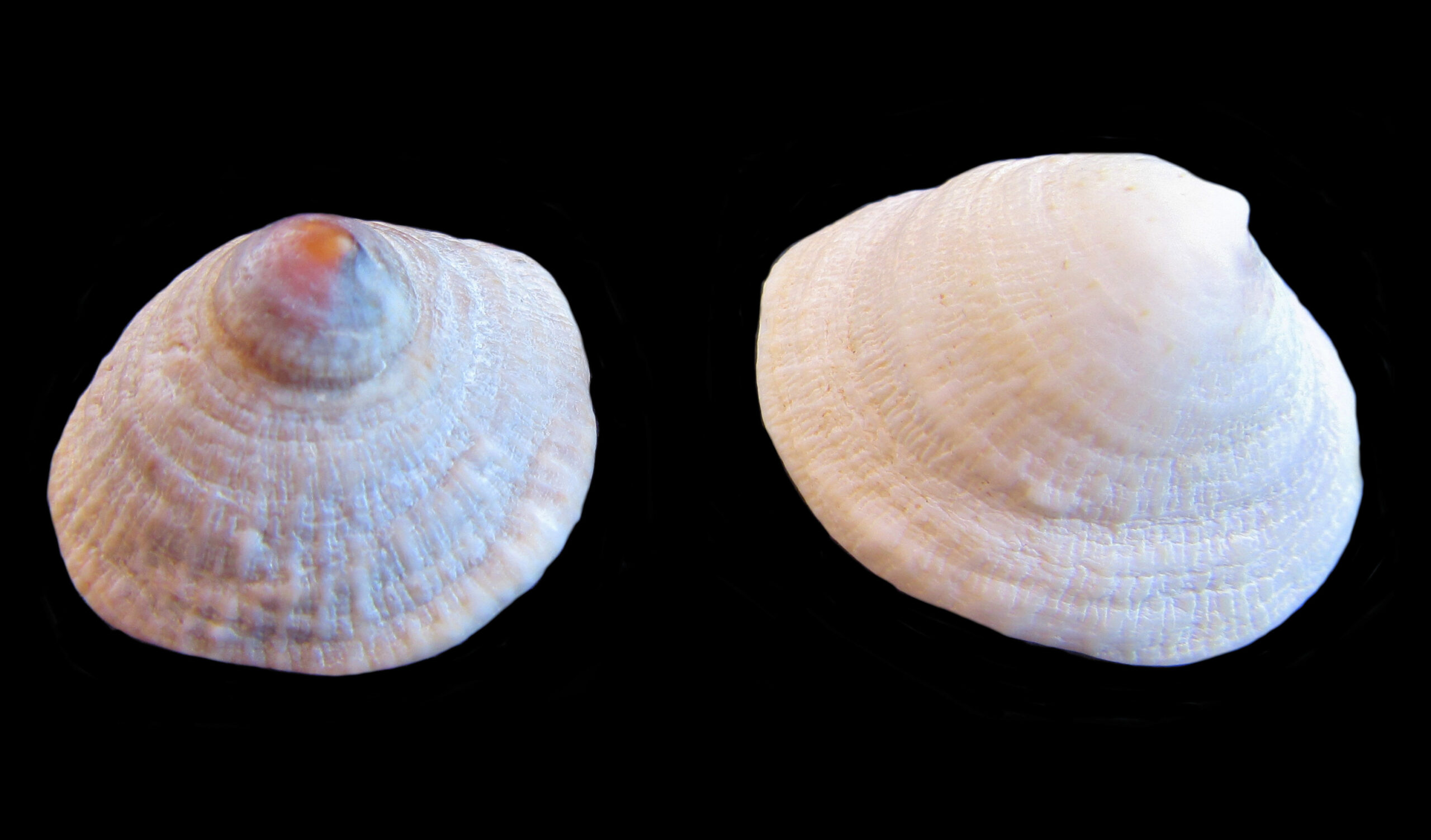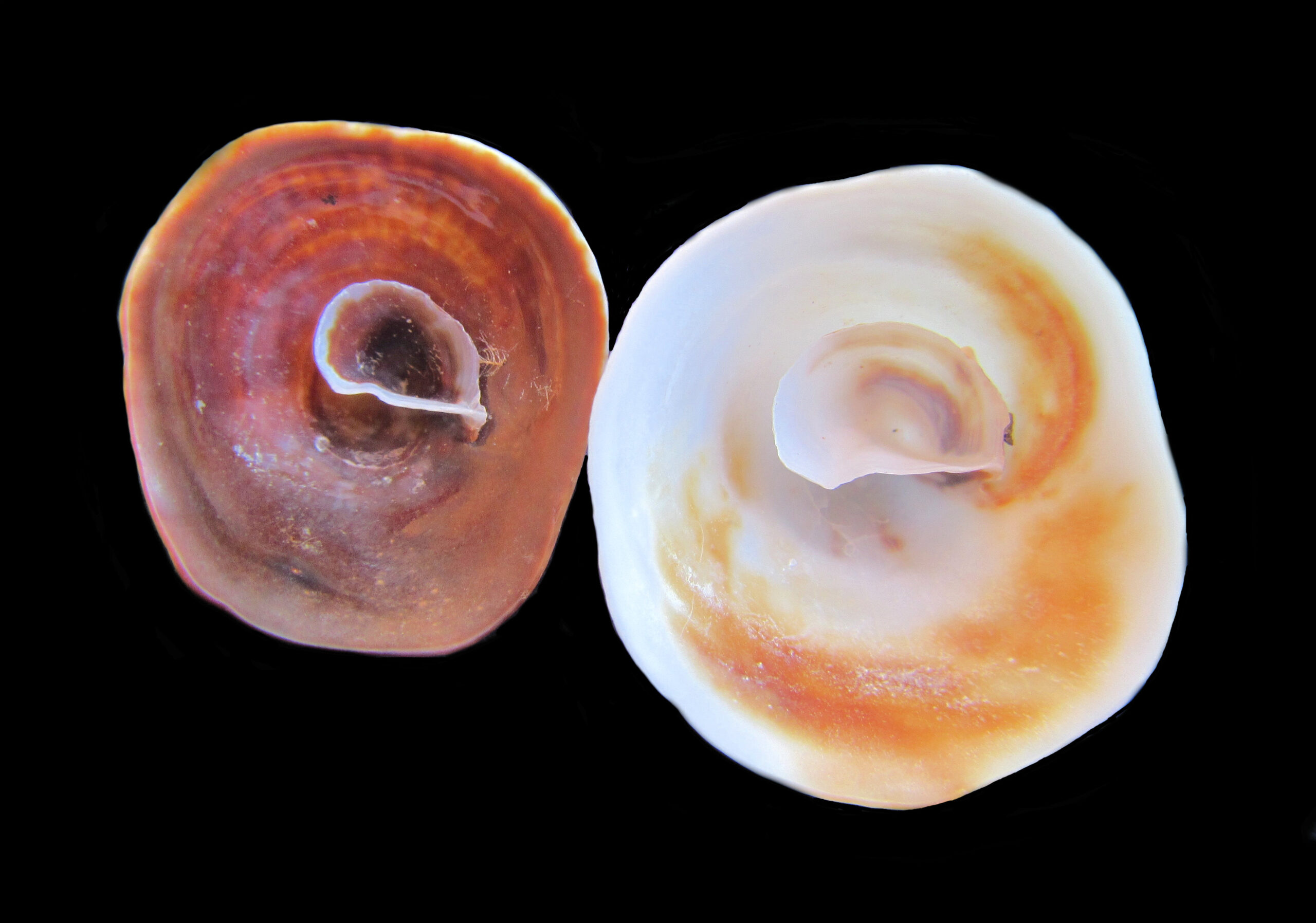Woodpile Cup-and-Saucer Shell, Crucibulum lignarium

 Woodpile Cup-and-Saucer, Crucibulum lignarium. Shell collected off the beach at Las Barilles, Baja California Sur, May 2018. Size: 4.1 cm (1.6 inches) x 3.8 cm (1.5 inches. Collection, photograph and identification courtesy of Bob Hillis, Ivins, Utah.
Woodpile Cup-and-Saucer, Crucibulum lignarium. Shell collected off the beach at Las Barilles, Baja California Sur, May 2018. Size: 4.1 cm (1.6 inches) x 3.8 cm (1.5 inches. Collection, photograph and identification courtesy of Bob Hillis, Ivins, Utah.
The Woodpile Cup-and-Saucer, Crucibulum lignarium (Broderip, 1834), is a gastropod mollusk that is a member of the Calyptraeidae Family of Cup-and-Saucer and Slipper Limpets. The shells that have variable profiles ranging from circular to triangular. The variations follow the shape of the shell to which they are attached. The shell is high in profile, the apex is forward and curved and the shell is marked by fine radial riblets and coarser, concentric, growth ridges. The cup is well developed. The shell, including the inside cup, is brown, gray, or white. The Woodpile Cup-and-Saucer Shells reach a maximum of 4.6 cm (1.8 inches) in length and 4.3 cm (1.7 inches) in height.
The Woodpile Cup-and-Saucers are found attached to other shells, especially gastropods, and rocks in the intertidal zone to depths up to 150 m (500 feet). These shells are found in the Sea of Cortez from Bahía de los Ángeles, Baja California to Cabo San Lucas, Baja California Sur and south to Peru. They are also found in Indonesia and the South China Sea.
A synonym is Calyptraea lignaria